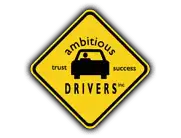The term road rage refers to an extreme form of aggressive driving that has been identified as a risk factor for motor vehicle accidents. Road rage behaviours include repeated horn honking, red-light running, tailgating, headlight flashing, excessive breaking, verbal abuse, lewd gestures directed at another motorist, purposefully cutting off another driver and even exiting a vehicle and getting into a physical confrontation.
Follow these tips to avoid being a victim of road rage:
- Obey speed limits and traffic laws.
- Keep to the right if you are a slower driver.
- Call 911 if you see an individual driving recklessly.
- Do not make eye contact with an upset driver.
- Do not confront an upset motorist.
- If you are cut off, refrain from making any hand gestures to the other motorist.
- If you are being chased by another motorist who appears to be angry, do not weave in and out of traffic, which is dangerous.
- If you are being chased, drive with the flow of traffic and alert the authorities via hands-free calling.
Ambitious Drivers driving courses give equal importance to theoretical and practical training. Contact Ambitious Drivers today to schedule your driving classes. (416) 293-6500






